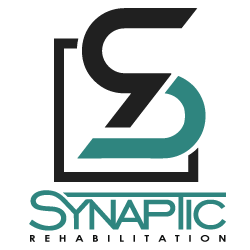
Unlocking the Potential of In-Home Physical Therapy
Physical therapy is a crucial aspect of healthcare that helps individuals recover from injuries, manage chronic conditions, and improve their overall physical well-being. Traditionally, physical therapy has been conducted in clinical settings such as hospitals or outpatient rehabilitation centers. However, with advancements in technology and the increased demand for personalized and convenient healthcare, in-home physical therapy is gaining traction. In this article, we will explore the potential of in-home physical therapy, its benefits, challenges, and how it can revolutionize the way we approach rehabilitation.
1. Understanding In-Home Physical Therapy
In-home physical therapy refers to the provision of physical therapy services in the comfort and convenience of a patient’s own home. It involves a qualified physical therapist visiting the patient’s residence and delivering individualized treatment plans designed specifically for their needs.
This form of therapy allows patients to receive the care they require in environments that are familiar and comfortable to them. It eliminates the need for frequent travel to clinics or hospitals, making it particularly beneficial for individuals with mobility limitations or those living in remote areas.
2. Benefits of In-Home Physical Therapy
a. Convenience and Comfort: One of the primary advantages of in-home physical therapy is the convenience it offers. Patients no longer need to schedule appointments, arrange transportation, or spend time in waiting rooms. They can receive therapy in the comfort of their own homes at times that suit their schedules.
b. Personalized Treatment: In-home physical therapy allows therapists to gain valuable insights into a patient’s living conditions and daily routines. This enables them to tailor treatment plans that address specific challenges and goals. By working within the patient’s home environment, therapists can provide individualized care that may yield better outcomes.
c. Increased Patient Compliance: Research suggests that patients may be more likely to comply with their therapy regimen when receiving treatment at home. The familiarity of the environment and the absence of external distractions can enhance motivation and encourage adherence to prescribed exercises.
d. Cost-Effective: In-home physical therapy can be a cost-effective alternative to traditional clinic-based therapy. It reduces transportation costs, eliminates the need for parking fees, and minimizes time away from work or other commitments. Additionally, it may help reduce the risk of hospital readmissions or expensive interventions, as therapy can be closely monitored at home.
e. Enhanced Healing Process: Being treated at home allows patients to recover in a stress-free and supportive environment. Eliminating the need for travel to a clinical setting helps eliminate potential pain or discomfort caused by transportation. Moreover, being surrounded by loved ones can accelerate the healing process by providing emotional support.
3. Challenges of In-Home Physical Therapy
As with any healthcare service, in-home physical therapy also has its challenges. It is essential to acknowledge and address these concerns to ensure the best possible care for patients.
a. Limited Equipment and Space: Unlike clinical settings, homes may have limited equipment and space for therapy. Physical therapists have to work with the resources available in the patient’s home. However, recent advancements in portable exercise equipment and modalities have helped overcome many of these challenges.
b. Lack of Social Interaction: Some patients might miss the social interaction and support that clinical settings offer. Therapists must prioritize creating an environment that promotes a positive patient-therapist relationship and encourages open communication.
c. Safety Concerns: Safety is crucial during in-home physical therapy sessions. Therapists must conduct thorough assessments of the home environment to identify potential hazards and make necessary modifications. Adequate communication and coordination with other family members or caregivers are essential to maintaining a safe working environment.
d. Limited Scope of Practice: Some physical therapy techniques and modalities may require specialized equipment or expertise that cannot be easily replicated in a home setting. Patients requiring extensive interventions may still require occasional visits to a clinical facility to access additional resources.
4. Unlocking the Potential of Technology
The integration of technology has further unlocked the potential of in-home physical therapy. Here’s how digital advancements are revolutionizing the field:
Telehealth Platforms
Telehealth platforms have become a cornerstone of in-home physical therapy. Patients can connect with their therapists through secure video consultations, enabling real-time communication and guidance. This not only saves time and effort but also ensures that patients receive the necessary support, even when an in-person visit is not feasible.
Mobile Applications
Numerous mobile applications are designed to complement in-home physical therapy. These apps offer exercise routines, progress tracking, and reminders for therapy sessions. Patients can access their personalized programs from the convenience of their smartphones, making it easier to stay on track and engage in their treatment.
Wearable Technology
Wearable devices, such as fitness trackers and smartwatches, can monitor vital signs, track movement, and provide valuable data for therapists. This information allows for a more data-driven approach to therapy, with therapists being able to assess progress and make adjustments based on real-time data.
Virtual Reality (VR)
Virtual reality technology is increasingly being used in physical therapy. It can create immersive and engaging exercises for patients, particularly those recovering from neurological injuries or strokes. VR not only adds an element of fun but also facilitates more intensive and focused therapy.
The Future of In-Home Physical Therapy
As in-home physical therapy continues to grow in popularity and sophistication, it holds the promise of further innovation and advancement. Here are some potential developments that may shape the future of in-home physical therapy:
Artificial Intelligence (AI)
AI-powered systems could help therapists analyze patient data more effectively, leading to highly personalized treatment plans. AI may also play a role in predicting patient progress and making real-time adjustments to therapy programs.
Robotics
The integration of robotics into in-home physical therapy could expand the range of treatments and exercises available. Robotic devices can provide precise, repetitive movements, which can be particularly valuable in rehabilitation.
Remote Monitoring
Advances in remote monitoring technology may allow therapists to keep a close eye on their patients’ progress, even when not actively engaged in a session. This continuous monitoring can lead to earlier interventions and better outcomes.
Expanded Specializations
In-home physical therapy may diversify and specialize in various areas, from pediatric care to sports rehabilitation. This specialization will allow therapists to cater to specific patient populations with even more precision.
Conclusion
In-home physical therapy is a transformative approach to healthcare that has the potential to benefit individuals of all ages, from infants to seniors. Its personalized, convenient, and adaptable nature makes it an ideal choice for patients seeking recovery, improved mobility, and enhanced quality of life.
By sharing success stories like Mia, John, and Evelyn, we’ve witnessed the profound impact that in-home physical therapy can have on the lives of those who embrace it. It’s a powerful reminder that age should never be a barrier to accessing the care needed to thrive and live life to the fullest.
The integration of technology has further unlocked the potential of in-home physical therapy, allowing for more accessible and data-driven treatment. Telehealth platforms, mobile applications, wearable devices, and even virtual reality are making it easier for patients to engage in therapy and for therapists to provide effective guidance and support.
As we look ahead, the future of in-home physical therapy appears promising, with advancements in AI, robotics, remote monitoring, and specialized care on the horizon. These innovations will continue to enhance the quality and scope of care provided in the comfort of patients’ homes.
In conclusion, in-home physical therapy is more than a trend; it’s a healthcare revolution that promises to empower individuals of all ages, ensuring that they have the opportunity to unlock their full potential in terms of recovery, mobility, and overall well-being.

